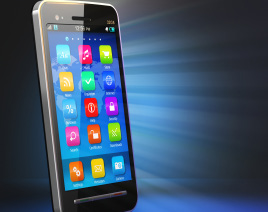 The latest industry buzz about the recent flattening of mobile device sales is something VARs and MSPs should be paying close attention to. This market slowdown is a great example of how innovation drives revenue and, without it, demand quickly diminishes. In the case of mobile sales, the softening market can be partially attributed to developing countries reaching a market saturation point and slower replacement cycles among consumers. There's little "sizzle" or "buzz" to generate excitement. But consider what would happen were a manufacturer to suddenly roll out the next "must have" device. If the innovation was significant enough, the masses would line up yet again to plunk down their cash. It's not rocket science...though a little more of that right now might help the market.
The latest industry buzz about the recent flattening of mobile device sales is something VARs and MSPs should be paying close attention to. This market slowdown is a great example of how innovation drives revenue and, without it, demand quickly diminishes. In the case of mobile sales, the softening market can be partially attributed to developing countries reaching a market saturation point and slower replacement cycles among consumers. There's little "sizzle" or "buzz" to generate excitement. But consider what would happen were a manufacturer to suddenly roll out the next "must have" device. If the innovation was significant enough, the masses would line up yet again to plunk down their cash. It's not rocket science...though a little more of that right now might help the market.
I mean, how many phones does a person need? Take my last device for example. It lasted a little more than four years and, if not for a rapidly degrading battery and charging cycle, it surely would have lasted a while longer. Unless dropped, stepped on or a part of some other tragic accident, today’s smartphones are rather sturdy units. My mother’s flip phone with the large buttons has gone even longer- five years and counting (even with her obsession to charge it constantly).
In other words, the manufacturers have over-engineered their products. That’s great for consumers but not as good for the bottom line of the producers. The car industry has gone through similar cycles, where the quality improved so much that it became hard to justify the latest models, especially when prices were rising significantly each year.
The other part of the equation is value. What features are manufacturers (phone or cars) building in each new model? Automotive innovations have really ramped up recently with more advanced safety and self-driving features, as well as the latest hybrid and electric powertrain options. Tesla a great example. The company projects its Model 3 electric car to be priced between $30 and $40k and the first customer delivery is expected by the end of next year. More than 400,000 people have plunked down a deposit of $1000 for their place in line which, based on their expected production rate, could be more than 8 years away for the latest to register.
That is supply and demand at work. Build the better mousetrap and they will come. We witnessed a similar effect with the first generations of the iPhone. People clamor for innovation. They pay more to be the first on the block (or in the office) with the latest cool device or solution. Many tech-focused companies understand the innovation model and work diligently with the product and marketing teams to capture those types of viral sales opportunities. But the time has to be right.
The mobile phone industry has lost some of that mojo as of late. Sure, each new model offers a little more options and functionality, like improved camera lenses and additional applications. You can get a phone/watch combination that measures virtually every body function and gives you more options for making and receiving calls. You can get a phone that is almost the size of a tablet…I mean, who doesn’t love the term “phablet?” But the most innovative days seem to be behind many mobile device manufacturers.
You can put an astronomical price on something that delivers only marginal improvement over previous models, but consumers will notice (eventually). Based on the market outlook, mobility devices may have reached that tipping point. Until now, many have been in the driver’s seat, but will the downturn force manufacturers to start competing more on price than on innovation? Perhaps, but some will surely double-down on new features and “premium offerings” to avoid commoditization. Much like an MSP boosting his or her vertical market expertise rather than going down market. The major mobile manufacturers have likely considered all these issues and put their own plans of actions into place. The next couple of years could get interesting.
What should VARs and MSPs learn from this market trend? For one, incremental innovation won’t drive sales ̶especially when the cost of upgrading is considerable. Customers will be more likely to pay a premium for novel, useful products and services, and even more if the experience is truly unique. In many cases, perception rules. Are the solutions they have in place now good enough for the next year or longer? Will they improve sales, customer satisfaction or, ultimately, the bottom line?
As far as mobile devices, I’ll just keep mine one more year, thank you. It’s simply too hard to justify the investment today when the old one still works just fine. Ask yourself, when it comes to the solutions you’re proposing to your customers, are they thinking the same thing?
Brian Sherman is Chief Content Officer at GetChanneled, a channel business development and marketing firm. He served previously as chief editor at Business Solutions magazine and senior director of industry alliances with Autotask. Contact Brian at Bsherman@getchanneled.com

